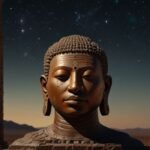What is Mizukando?
At its core, mizukando is the art of embodying water’s qualities—resilience, flexibility, and mindfulness. The word itself combines mizu (water) and kando (sensation or perception), emphasizing the way water shapes our thoughts, emotions, and actions.
In Japan, water is more than a natural element; it’s a symbol of life’s impermanence, balance, and harmony. From ancient Zen practices to modern self-care rituals, mizukando serves as a guiding principle for cultivating peace and flow in an ever-changing world.
The Principles of Mizukando
To fully embrace mizukando, one must understand the fundamental principles that define this philosophy:
1. Flow with Change
Just as rivers carve new paths over time, life is full of unexpected twists. Instead of resisting change, mizukando teaches us to adapt gracefully.
Example:
Think of how a river bends around obstacles rather than fighting them. Applying this to life, we can approach challenges with flexibility rather than frustration.
2. Clarity Through Stillness
Still waters reflect clearly, while turbulent waters distort everything around them. Practicing stillness—whether through meditation, deep breathing, or mindful reflection—allows us to see situations with greater clarity.
Example:
Before reacting to stress, take a moment to pause. A calm mind leads to better decisions.
3. Strength in Softness
Water may seem gentle, but it has the power to shape mountains. Mizukando reminds us that true strength comes from persistence, not force.
Example:
Rather than confronting conflicts with aggression, approach them with patience and understanding. Over time, kindness and wisdom can dissolve even the toughest barriers.
4. Purity and Renewal
Water cleanses, refreshes, and renews. In life, we can apply this by letting go of negativity and embracing new beginnings.
Example:
Decluttering your space, engaging in mindful rituals like tea ceremonies, or journaling can help cleanse the mind and spirit.
You May Also Like: Stuwk: The Ultimate Daily Life Enhancer and Project Management

Mizukando in Daily Life: Practical Applications
Embracing mizukando doesn’t require a radical lifestyle change. Instead, small, mindful adjustments can help you embody its essence.
| Aspect of Life | How to Apply Mizukando |
|---|---|
| Morning Routine | Start your day with water—drink a glass to hydrate, take a mindful shower, or meditate near a water feature. |
| Work & Productivity | Approach tasks with fluidity—adapt to changes, take mindful breaks, and stay flexible in problem-solving. |
| Relationships | Communicate with the ease of flowing water—listen actively, respond thoughtfully, and let go of grudges. |
| Mental Well-being | Practice stillness—spend time in nature, meditate, or simply sit by a body of water to reset your mind. |
| Physical Health | Move like water—engage in exercises like swimming, yoga, or tai chi that emphasize flow and grace. |
Mizukando and Japanese Culture
Water has long been a revered element in Japanese culture. Mizukando is deeply embedded in various traditions, including:
- Zen Gardens – Designed with water elements to encourage reflection and tranquility.
- Tea Ceremony (Chado) – Water is carefully heated, poured, and appreciated as part of a meditative ritual.
- Onsen (Hot Springs) – Bathing in natural hot springs is a cleansing and restorative experience.
- Haiku Poetry – Water often serves as a metaphor for fleeting moments and natural beauty.
These cultural practices illustrate how mizukando influences the Japanese approach to mindfulness and harmony.

Mizukando and Modern Mindfulness
While mizukando originates from Japanese traditions, its principles align with modern mindfulness practices. The concept is increasingly gaining recognition in wellness circles worldwide.
How Mizukando Complements Modern Practices:
- Minimalism: Letting go of clutter and excess aligns with water’s ability to cleanse and refresh.
- Meditation & Yoga: Emphasizing flow, balance, and adaptability mirrors the essence of water.
- Emotional Intelligence: Responding with calmness rather than reaction mirrors the stillness of water.
You May Also Like: Stuwk: The Ultimate Daily Life Enhancer and Project Management
Conclusion
In a world that often feels chaotic, mizukando offers a reminder to move with ease, embrace change, and cultivate inner peace. Just like water, we can navigate life’s currents with grace, strength, and clarity.
FAQs
1. Is mizukando a religious practice?
No, mizukando is more of a philosophy than a religious practice. While it has roots in Japanese culture, anyone can apply its principles to daily life.
2. Can mizukando help with stress management?
Yes! The philosophy encourages mindfulness, adaptability, and emotional clarity, all of which help reduce stress.
3. How is mizukando different from mindfulness?
While mindfulness focuses on present-moment awareness, mizukando emphasizes adaptability, fluidity, and resilience inspired by water.
4. Can mizukando be practiced anywhere?
Absolutely. Whether you’re in a bustling city or a quiet countryside, you can embody the principles of mizukando through mindful actions and perspectives.
5. Does mizukando involve physical practices?
Not necessarily, but activities like swimming, yoga, and meditation can help embody its principles.
6. How can I introduce mizukando into my daily routine?
Start small—drink water mindfully, practice patience, and approach challenges with flexibility.
7. Is mizukando linked to feng shui?
Yes, both emphasize harmony and balance, though mizukando is more focused on personal mindset and adaptability.










